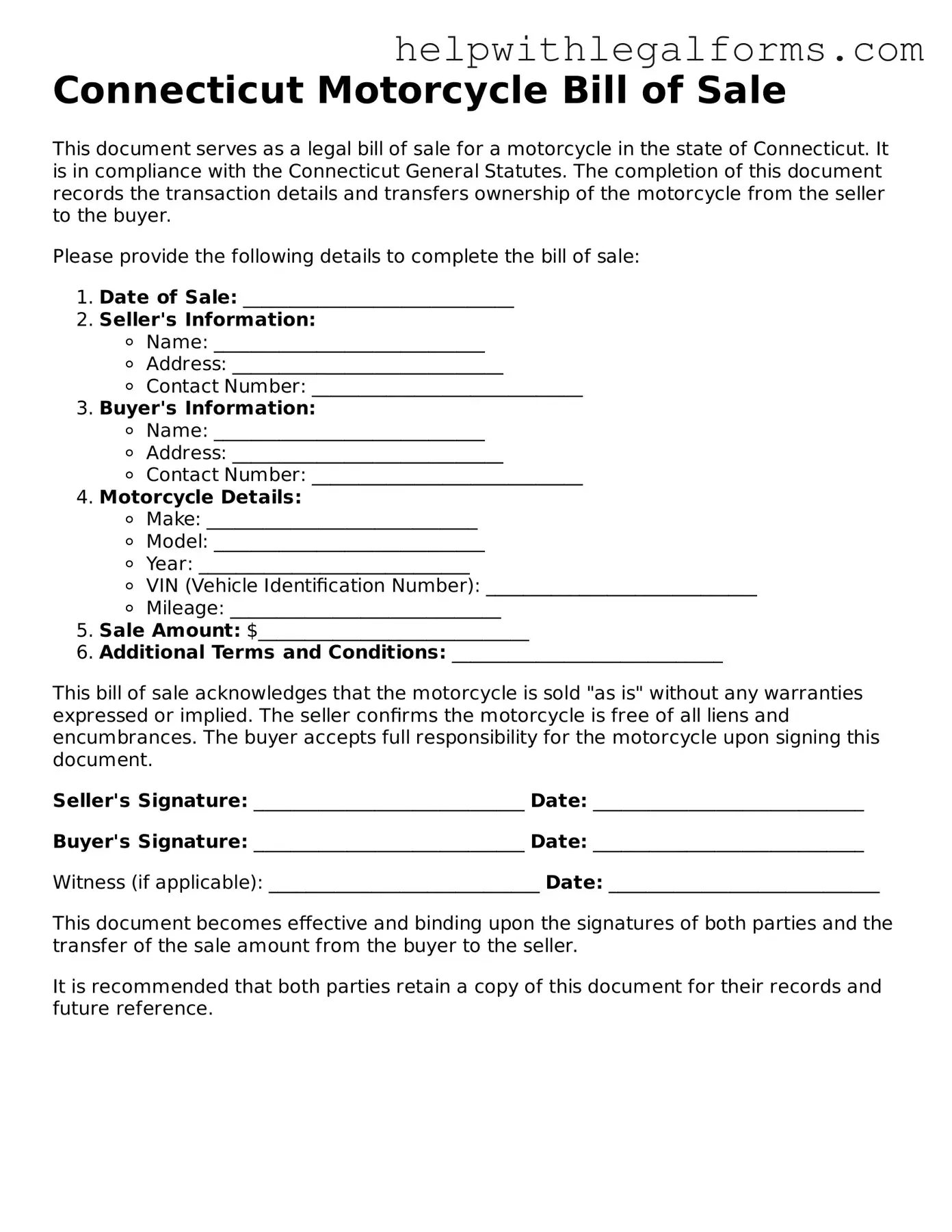What is a Connecticut Motorcycle Bill of Sale form?
A Connecticut Motorcycle Bill of Sale form is a legal document that records the sale of a motorcycle from a seller to a buyer in the state of Connecticut. It details the agreement between the parties, capturing information such as the make, model, year, and price of the motorcycle, as well as the names and signatures of both the seller and the buyer. This document serves as proof of ownership transfer and is often required for registration and titling purposes.
Why do I need a Connecticut Motorcycle Bill of Sale?
In Connecticut, having a Motorcycle Bill of Sale is crucial for a few reasons. First and foremost, it protects both the buyer and the seller in case of disputes over the sale or the motorcycle's condition. It is also necessary for the buyer to register and title the motorcycle in their name. Without this document, completing these legal steps can be challenging, if not impossible. For added security, getting the bill of sale notarized, though not mandatory, is a wise decision.
What information should be included in the Connecticut Motorcycle Bill of Sale?
The Connecticut Motorcycle Bill of Sale should include: the date of sale, the full names and addresses of both the buyer and the seller, a detailed description of the motorcycle (including make, model, year, color, odometer reading, and VIN), the sale price, and any conditions or warranties. Additionally, it should have a statement regarding the motorcycle’s current lien status and be signed by both parties to confirm the transaction.
How do I obtain a Connecticut Motorcycle Bill of Sale form?
Obtaining a Connecticut Motorcycle Bill of Sale form can be done in a few ways. The Connecticut Department of Motor Vehicles (DMV) often provides standard forms or templates on its website. Alternatively, legal document websites offer downloadable forms—sometimes for free or for a small fee. Make sure the form complies with the Connecticut state requirements. For a more customized bill of sale, consider consulting with a legal professional.
Is a Connecticut Motorcycle Bill of Sale legally binding?
Yes, a Connecticut Motorcycle Bill of Sale is legally binding once it is signed by both the buyer and the seller. This document not only finalizes the sale but also can be used as evidence in court if any legal issues arise from the transaction. It’s important to accurately fill out and securely store the bill of sale, as it is a key document for ownership and legal disputes.
